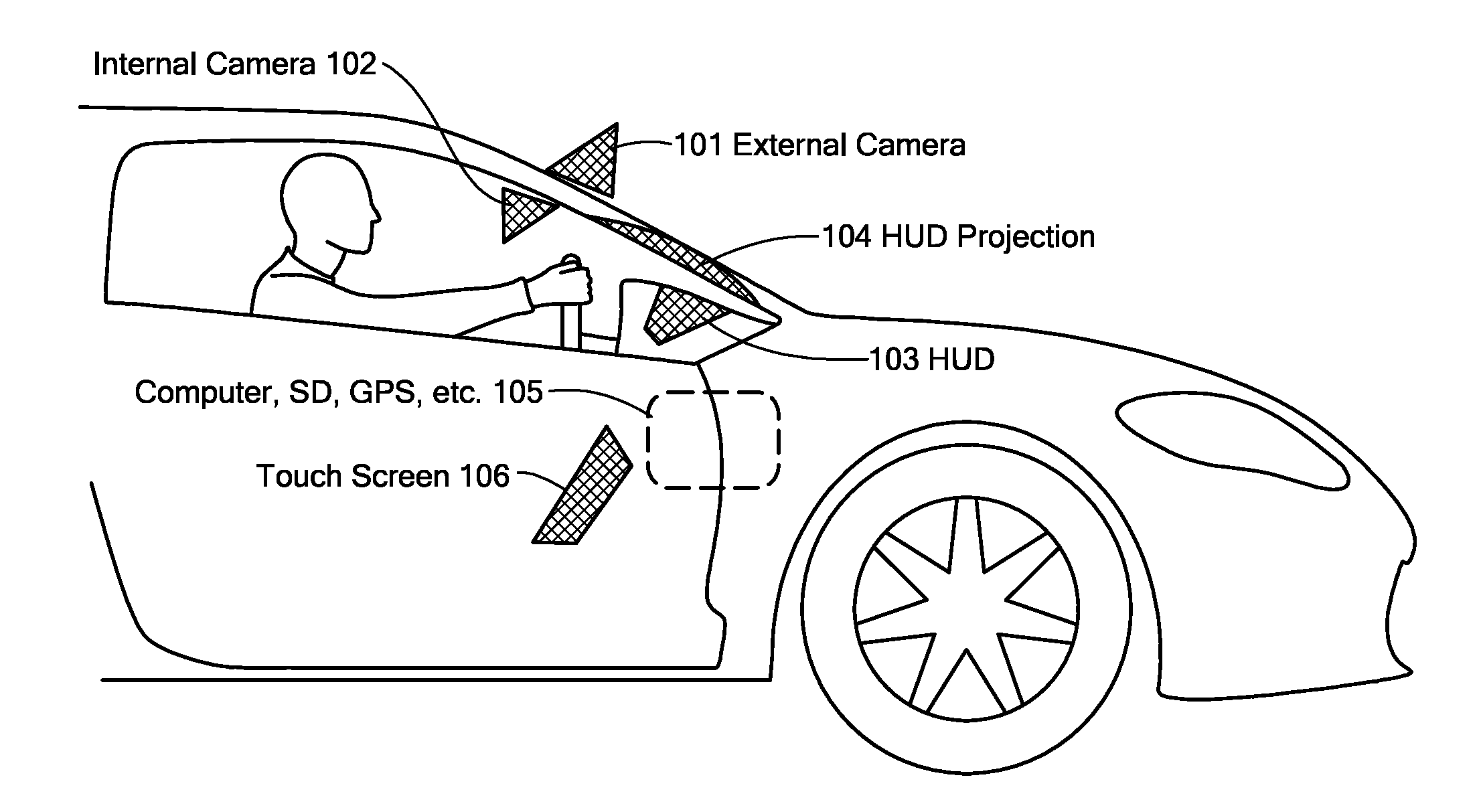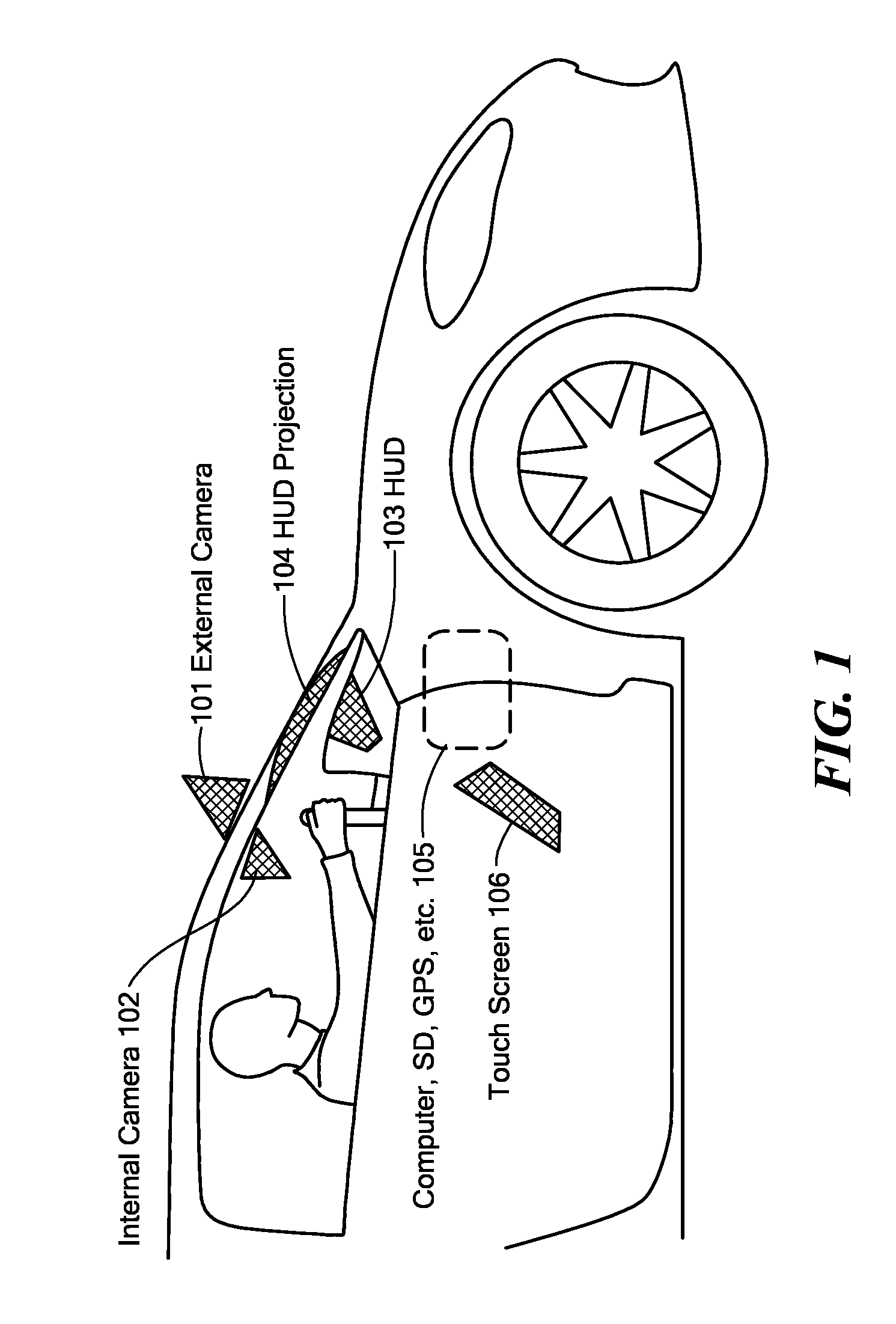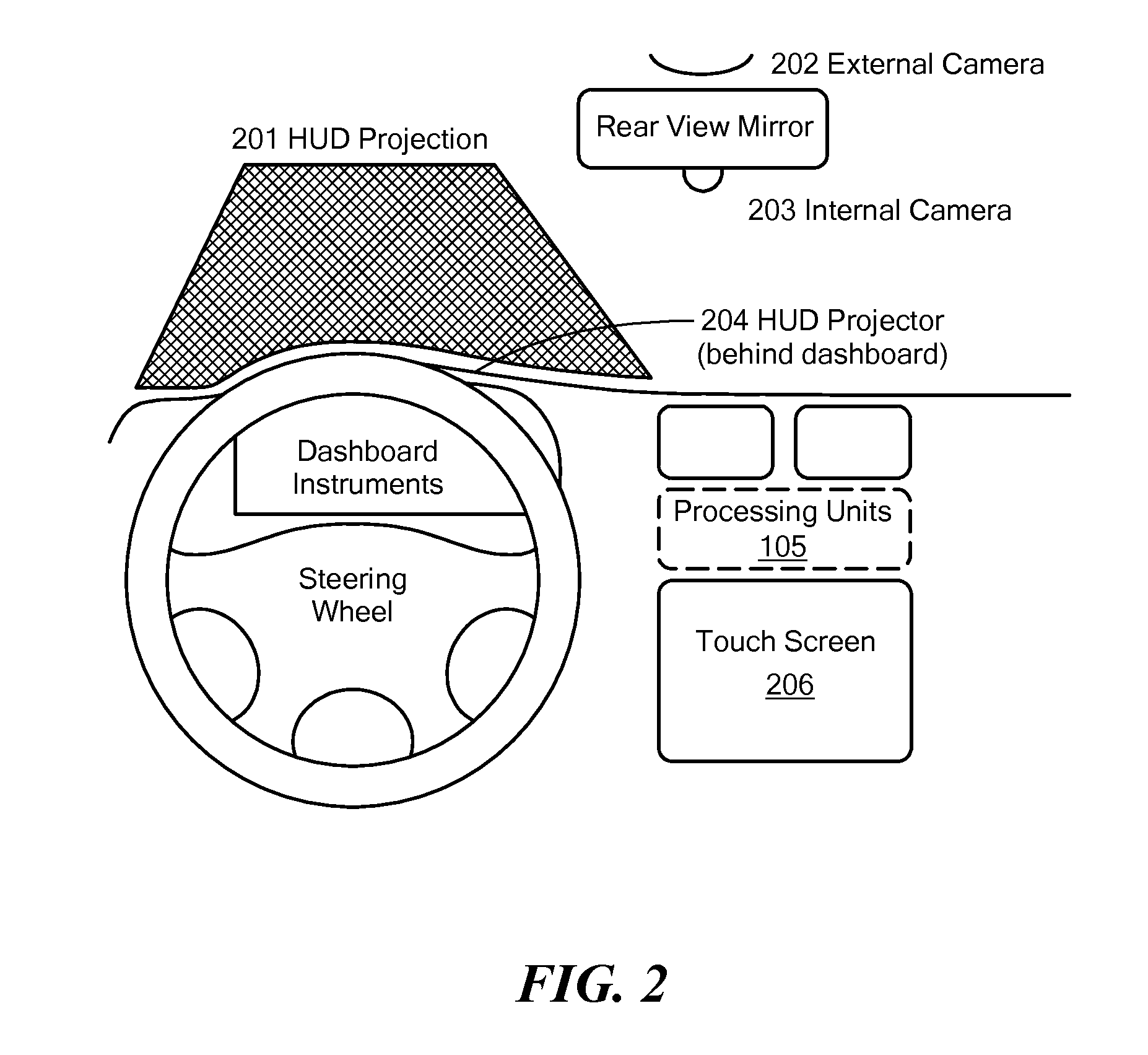Reducing Driver Distraction Using a Heads-Up Display
- Summary
- Abstract
- Description
- Claims
- Application Information
AI Technical Summary
Benefits of technology
Problems solved by technology
Method used
Image
Examples
Embodiment Construction
[0004]Driver distraction is reduced by providing information only when necessary to assist the driver, and in a visually pleasing manner. Obstacles such as other vehicles, pedestrians, and road defects are detected based on analysis of image data from a forward-facing camera system. An internal camera images the driver to determine a line of sight. Navigational information, such as a line with an arrow, is displayed on a windshield so that it appears to overlay and follow the road along the line of sight. Brightness of the information may be adjusted to correct for lighting conditions, so that the overlay will appear brighter during daylight hours and dimmer during the night. A full augmented reality is modeled and navigational hints are provided accordingly, so that the navigational information indicates how to avoid obstacles by directing the driver around them. Obstacles also may be visually highlighted.
[0005]Therefore, there is provided in a first embodiment a method of reducing...
PUM
 Login to View More
Login to View More Abstract
Description
Claims
Application Information
 Login to View More
Login to View More - R&D
- Intellectual Property
- Life Sciences
- Materials
- Tech Scout
- Unparalleled Data Quality
- Higher Quality Content
- 60% Fewer Hallucinations
Browse by: Latest US Patents, China's latest patents, Technical Efficacy Thesaurus, Application Domain, Technology Topic, Popular Technical Reports.
© 2025 PatSnap. All rights reserved.Legal|Privacy policy|Modern Slavery Act Transparency Statement|Sitemap|About US| Contact US: help@patsnap.com



